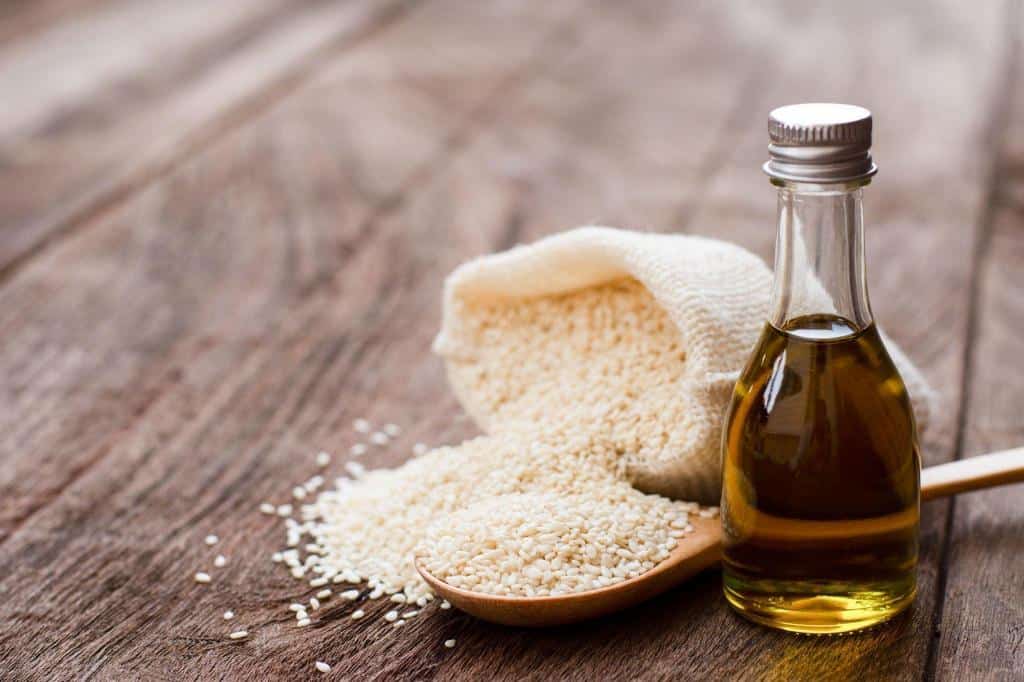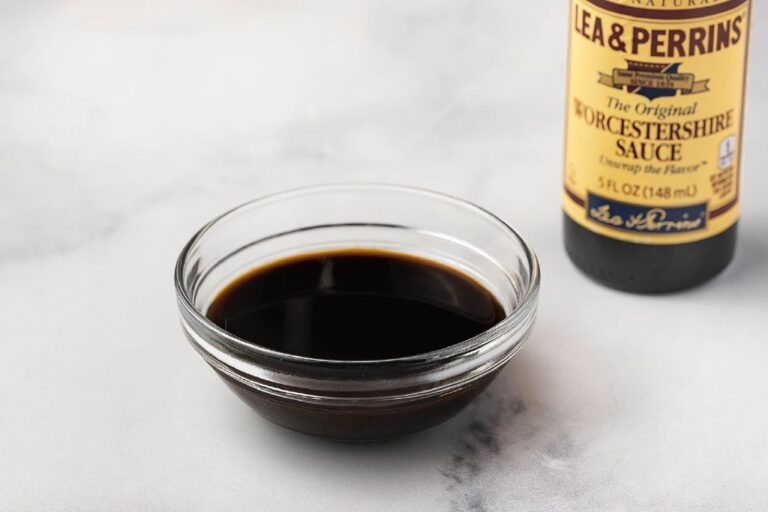Sesame Oil Shelf Life: How Long Does Sesame Oil Last?

Are you wondering how long your bottle of sesame oil will last before it goes rancid? Many people are bemused as to why their sesame oil lasts for varying amounts of time and want to know if they can extend its shelf life.
If you are one of them, you’re in the right place! In this post, we’ll dive into the shelf life of sesame oil and give you some tips for storing it properly to extend its lifespan.
Whether you’re a culinary enthusiast looking to incorporate sesame oil into your cooking or just want to make sure you’re not wasting money on expired ingredients, this post has you covered.
In this article, we’ll provide an explanation for why sesame oil can go bad faster and how you can extend its shelf life through proper storage. So let’s get started!
The Origin of Sesame Oil
Sesame oil is a type of oil that is derived from sesame seeds. These seeds are native to tropical regions of Africa and popular in many different cuisines around the world, particularly Asian, Middle Eastern, and African dishes. It is often used as a cooking oil, but it can also be used as a condiment or seasoning.
Sesame seeds are small, nutty seeds with a delicate, slightly sweet flavor. They are a popular ingredient in many cuisines around the world and are often used to add flavor and texture to dishes.
Sesame seeds are usually harvested from the sesame plant, which is a tall, annual herb that grows in a variety of climates. The seeds are found in pods that grow on the plant, and they are typically harvested when the pods turn brown and begin to split open.
To make sesame oil, the seeds are first cleaned and roasted to bring out their natural flavors. They are then ground into a paste and pressed to extract the oil. The oil is then filtered and bottled for use in cooking and other applications.
Sesame oil tastes nutty and a little bit sweet, and it is used in many different ways in the kitchen. It can be used in a variety of dishes, from stir-fries and marinades to sauces and dressings.
How Long Does Sesame Oil Last?
Generally, there is no set date for how long sesame oil will last or stay good. It depends on how it was handled during processing and how it was kept thereafter. Most of the sesame oil you buy at the supermarket has probably been sitting for weeks, months, or even years.
Sesame oil’s ability to keep in good condition will also depend on whether it is plain or toasted. Plain sesame oil might last a little longer than toasted sesame oil.
Sesame oil should be used within one to two years of purchase. An opened bottle of toasted sesame oil needs to be consumed within six to twelve months. The thing is getting a little short if you heat the oil; it should be consumed within 3–4 months.
When purchasing sesame oil, it is important to look for high-quality products. The best oil producers will work to keep their stocks moving at all times.
Below is a summary of the shelf life of sesame oil:
| Unopened sesame oil | 1-2 years |
| Opened sesame oil | 6 months to 1 year |
| Sesame oil that has been heated | 3-4 months |
The Shelf life of Sesame Oil Depends on Storage, Heat, and Light Exposure
| To extend the shelf | To extend the shelf | To extend the shelf |
| To extend the shelf | To extend the shelf | To extend the shelf |
The shelf life of sesame oil depends on several factors, including how it is stored and the type of sesame oil you have. Because it hasn’t been processed as much and has more natural antioxidants, unrefined sesame oil has a shorter shelf life.
When stored properly, unrefined sesame oil can last for up to six months. On the other hand, refined sesame oil has a much longer shelf life and can last for up to two years.
To extend the shelf life of sesame oil, it is important to store it in a cool, dark place, away from direct sunlight and heat. Sesame oil is sensitive to heat and light, and exposure to both elements can cause it to go rancid faster.
Sesame oil should also be kept in a sealed container so it doesn’t pick up smells or tastes you don’t want.
Read: What Can You Substitute Sesame Oil With?
Why It’s Better to Buy in Small Quantities
It’s generally better to buy sesame oil in small quantities because the oil can go rancid relatively quickly. Sesame oil has a relatively low smoke point, which means that it can break down and go rancid faster when exposed to high heat.
This can be a problem if you’re cooking with sesame oil on a regular basis, as the heat from the stove can cause the oil to break down and spoil faster.
Use smaller amounts of sesame oil at a time and store the rest in the refrigerator. A smaller container means less air and quicker use before it goes bad. This will help keep the oil fresh for longer.
Refrigeration and Freezing Sesame Oil

While sesame oil has a relatively long shelf life compared to other cooking oils, it is still subject to spoilage and can go rancid over time. So, many people wonder if it is necessary to refrigerate or freeze sesame oil to extend its shelf life.
In general, sesame oil does not need to be refrigerated or frozen. It is enough to store it in a cool, dry place away from direct sunlight. Sesame oil can last for up to two years.
But if you live in a warm or humid place or won’t be using the sesame oil for a long time, it might be a good idea to put it in the fridge or freezer to keep it from going bad.
To refrigerate sesame oil, simply seal the bottle tightly and store it in the refrigerator. Take note that sesame oil may solidify when refrigerated, but it will return to its liquid form once it reaches room temperature.
To freeze sesame oil, transfer it to a freezer-safe container and store it in the freezer. Leave some headspace in the container to allow for expansion as the oil freezes.
Signs of Spoilage in Sesame Oil
Knowing the signs of spoilage in sesame oil is important, so you don’t end up using an expired or rancid product. Sesame oil has a short shelf life, so knowing to look for signs that it is going bad will help you keep it fresh.
Change in Color
One of the most noticeable signs of spoilage in sesame oil is a change in color. If you’ve noticed that your sesame oil has changed from its natural golden hue to something darker or more yellowish-brown, it may be an indication that it has gone bad.
Sesame oil stays fresh when stored away from heat, light, and humidity. After this, the quality will decline until you notice a color change, one of the first signs of spoilage.
Change in Smell
The most common sign of spoilage in sesame oil is an unpleasant odor. This could be a strong odor, such as vinegar or gas, or it could be a subtle rancid odor with a fishy odor. If the sesame oil smells strange or unpleasant, then it should not be used for cooking purposes.
If left past its expiration date, the odor may become very unpleasant and bitter.
Change in Taste
Another indicator of spoilage in sesame oil is its taste when consumed directly. If left past its expiration date, the taste may become very unpleasant and bitter.
Spoiled sesame oil will have a bitter aftertaste, which may make food unpalatable if used while cooking. While roasted sesame oil should taste good and toasty, plain sesame oil should have little to no flavor.
Formation of Sediment
Most of the time, oxidation and hydrolysis cause sediment to form in sesame oil. This happens when the oil has been exposed to oxygen, light, and heat for too long.
Water, which provides microorganisms with a place to live and grow, can also help this process along by accelerating hydrolysis. Sesame oil with sediment should be discarded immediately to avoid food poisoning.
Best Storage Practices for Long Sesame Oil Shelf Life
To ensure that your sesame oil has a long shelf life, it’s important to store it properly. Here are a few tips for storing sesame oil to help it last as long as possible:
- Keep it in a cool, dark place. Sesame oil is sensitive to light and heat, so it’s best to store it in a cool, dark place away from direct sunlight or any other sources of heat. This will help prevent the oil from going rancid or losing its flavor.
- Use a dark glass bottle. Sesame oil is also sensitive to light, so it’s a good idea to store it in a dark glass bottle. This will keep it fresher for longer and protect it from light.
- Keep it sealed. Always make sure to seal your sesame oil tightly after each use. This will prevent air from getting in and will help the oil last longer.
- Don’t leave it out.: If you’re using sesame oil in cooking, be sure to put the bottle away after you’re finished. Leaving it out on the counter or in a warm place can cause the oil to spoil faster.
- A new bottle of sesame oil should never be mixed with an older bottle because the older oil will quickly degrade the newer oil.
By following these tips, you can help your sesame oil last as long as possible and enjoy its delicious flavor for longer.
Conclusion
In conclusion, the shelf life of sesame oil depends on a variety of factors, including how it’s stored, how it’s used, and the type of sesame oil you have.
Unopened sesame oil can last for up to two years if it’s stored in a cool, dark place, while opened sesame oil will last for about six months to a year if it’s stored properly.
However, sesame oil can go rancid faster if it’s exposed to heat, light, or air, so it’s important to store it properly and use it up quickly to ensure that you’re getting the freshest, most flavorful oil possible.
To maximize the shelf life of your sesame oil, be sure to store it in a cool, dark place, use a dark glass bottle, and keep it sealed tightly after each use.






